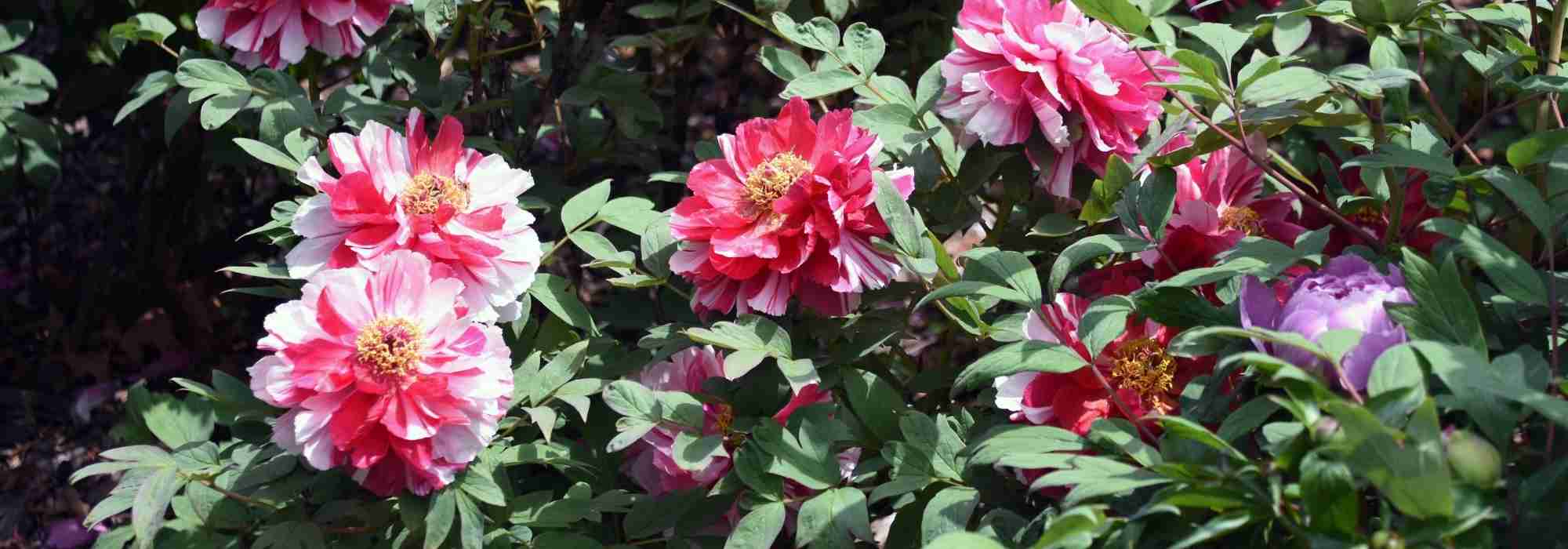
Plants that don't like being moved
These homebodies prefer to be left alone
Contents
There are plants that do not appreciate being moved once established, and they let us know! They struggle to recover or may not recover at all, taking an eternity to develop properly again. These are plants with a root system deeply anchored in the soil, a taproot, or a particularly fleshy rootstock. They are therefore difficult to uproot, with the risk of damaging them during a transplanting operation.
Since we often resort to moving plants that have become too comfortable in a bed, be sure to recognise those that are better left where they are… and move their neighbours instead!
Peony
Renowned for its delicacy, both in the flowering that takes several years to appear and in its planting, peony does not take well to being moved. This is due to its very deep root system. Moreover, when purchasing a young plant with bare roots, it is clear that the peony possesses quite a substantial root reservoir even before planting… The peony—herbaceous or shrubby—will develop over the years to form a magnificent clump of about 1 metre in diameter.
Therefore, think carefully about its placement, which should combine the following qualities: a sunny or slightly shaded exposure, deep and rich soil, preferably cool but well-drained.
→ Learn all about planting, cultivation, and care of peonies
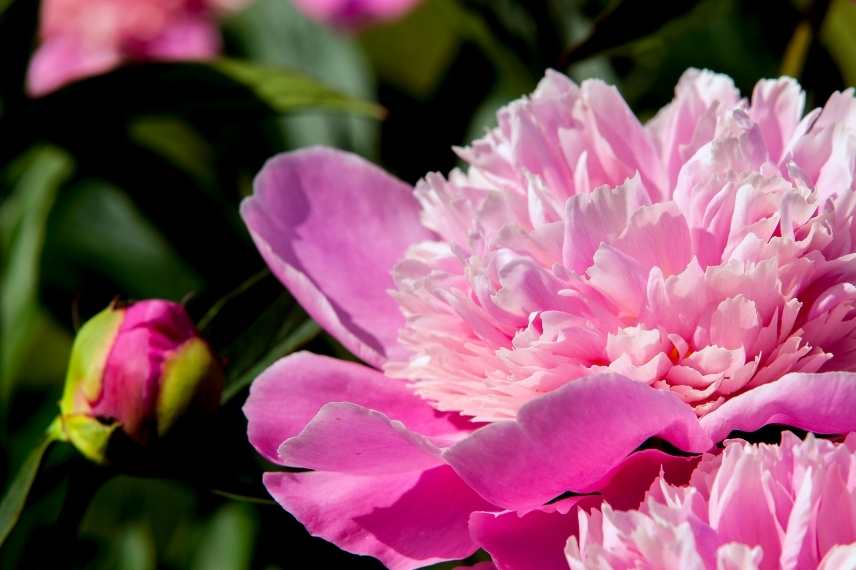
Read also
The different types of root systemsAcanthus
Here is a second plant that is somewhat temperamental and rather sedentary as well. The bear’s breeches is a stunning graphic perennial thanks to its large lobed foliage and spectacular flowering spikes. However, it does not appreciate changes in its location. It must be said that in addition to spreading out (often over 1m wide), it has very fleshy roots that penetrate deeply into the soil, allowing it to withstand periods of drought. Whether it is the classic Acanthus mollis, Acanthus spinosa, or Acanthus balcanicus for the most well-known species, you should also take great care in choosing its planting site: in full sun or partial shade, in fresh or dry but well-drained soil, and above all, ensure there is enough space around it for it to thrive fully.
→ Everything you need to know about bear’s breeches: planting, growing, and care.
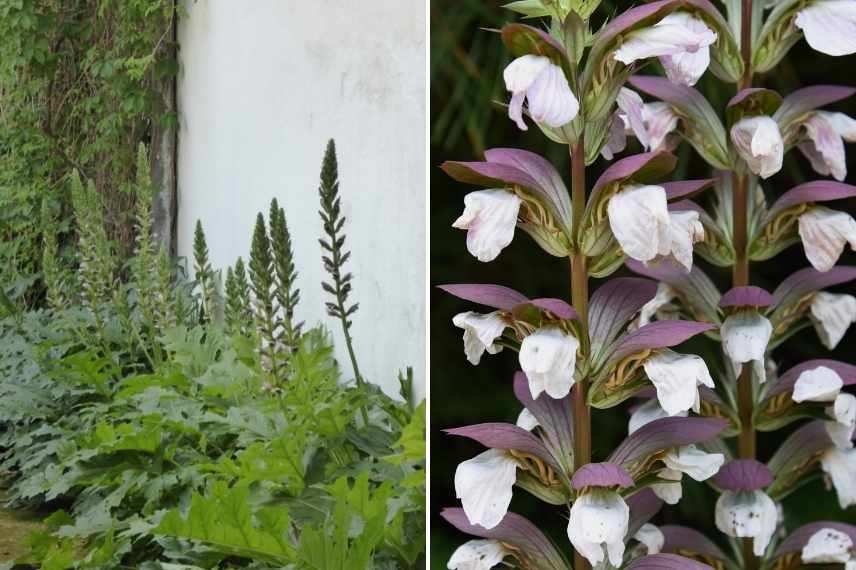
Bear’s breeches habit and flowers (© Gwenaëlle David)
Daphne
Particularly slow to establish, Daphne, one of the most fragrant small shrubs in the garden, is another plant best left undisturbed. Its shallow and spreading root system is also fleshy, with a few deeper roots. Poorly tolerating transplantation… and even repotting, and known for having a short lifespan, it is therefore better to avoid disturbing it and to carefully consider its location before planting. Of course, choose a spot near an opening, such as a house entrance or a frequently used path, in partial shade or even in shade (except for D. cneorum), so you don’t miss out on what contributes to its enchanting charm: heady fragrances for several weeks in mid-winter!
→Everything you need to know about Daphne, how to plant, grow, and care =?

Baptisia, Thermopsis... and other legumes
Among the Fabaceae -often referred to as legumes- identifiable particularly by their papilionaceous flowers (similar to pea flowers), there are several perennial plants or bushes that are resistant to change… Their roots fix atmospheric nitrogen, but are often either taproots and deep, or very spreading and flat, making their relocation tricky. This is the case with Baptisia, also known as false lupin or false indigo, Thermopsis, which is tinted with bright yellow, or Desmodium, which is pink. The Lespedeza thunbergii, with its lovely arching habit and late-season flowering, also falls into this category of plants that do not like to be moved.
So, reserve a carefully chosen spot for these lovely plants, which often find their place in cottage gardens or naturalistic styles.

Baptisia, Thermopsis, Desmodium…. many Fabaceae do not like to be moved
Mediterranean shrubs
There are some of the Mediterranean shrubs that do not particularly like being moved! We group them here under this name: lavender, thyme, rosemary, cistus… Even though the operation is still possible, their recovery is not really guaranteed.
If you really have no choice because you did not plant them in a sufficiently sunny location, transplant these plants from dry soil, which need to establish themselves in poor, dry soil, in spring (autumn would be too damp for their roots weakened by a move).
→ Learn all about planting lavender, thyme, rosemary, and cistus in our comprehensive guides.
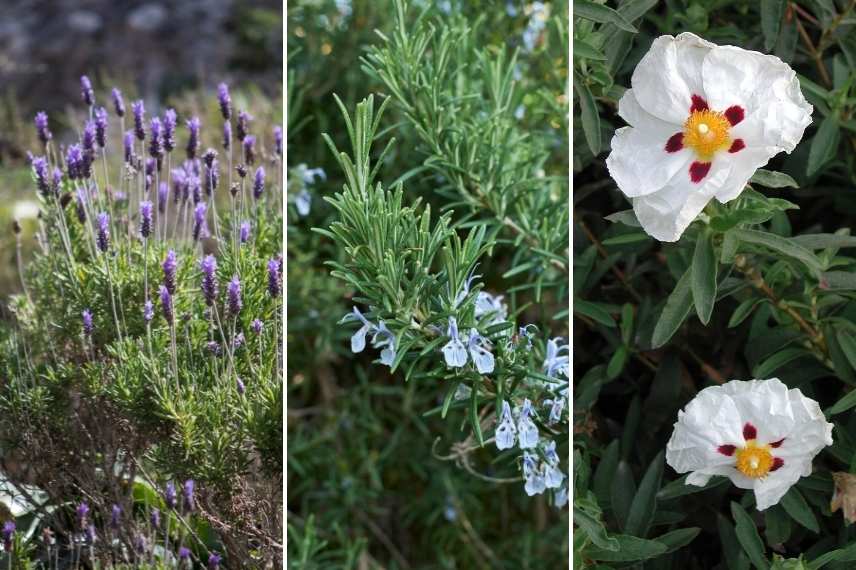
Lavender, rosemary, and cistus
Oriental poppies
Like large poppies with delicately crumpled petals and stunning pastel colours, Oriental poppies captivate at first glance. Just like peonies, Papaver orientale will gradually thicken both above… and below the soil, producing these flowers that are as divine as they are ephemeral in the garden. It will be practically impossible to dislodge them as their stump is made up of fleshy roots that plunge deeply into the soil.
However, do not neglect them in the garden: by providing them with full sun and deep, light, well-drained soil, they are among the most charming perennials of late spring!
→ Learn all about Oriental poppies: how to grow them?
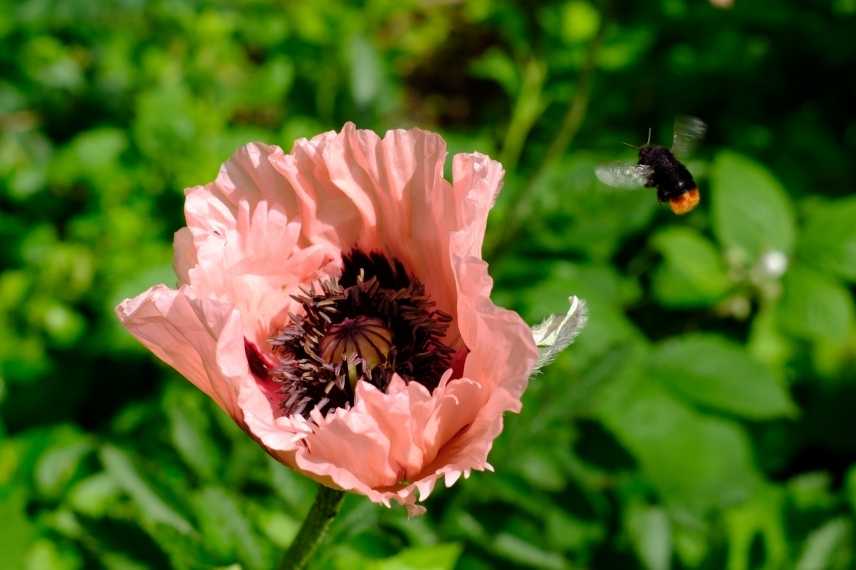
Bleeding heart
Formerly known as Dicentra spectabilis and now Lamprocapnos spectabilis, this charming perennial features bell-shaped flowers reminiscent of a bygone era, emblematic of cottage gardens. Bleeding heart is known to be sensitive to relocation, so choose its position wisely. Indeed, depending on the species (Dicentra spectabilis, formosa, peregrina, or eximia), the propagation of rootstocks is rapid and the roots weave inextricably among surrounding roots, which they do not fear. It will be quite delicate to uproot them, as their rootstock is particularly fragile and brittle.
→ Learn all about Bleeding heart, planting, cultivation, and companion planting
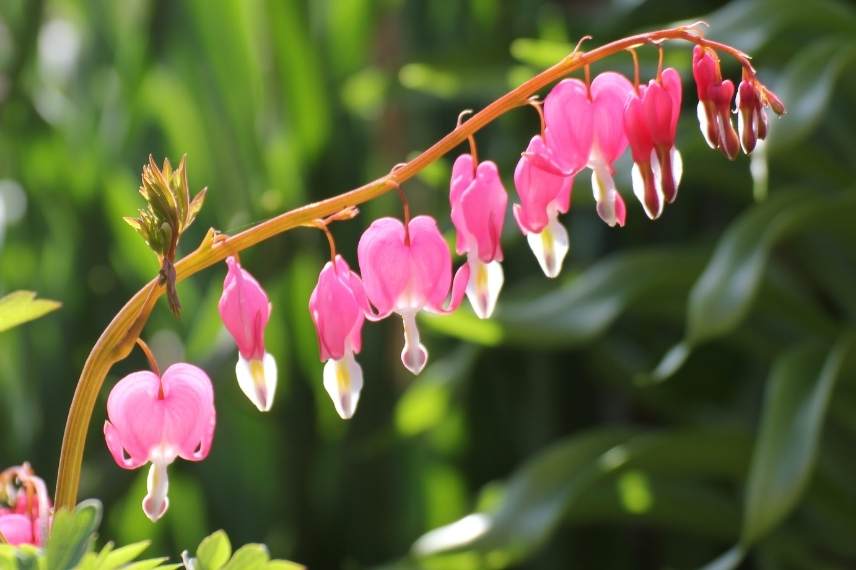
Calla Lilies
With their distinctive inflorescences shaped like ultra-graphic white spathes and their generous foliage edged with a beautiful deep green, Arums or Zantedeschia aethiopica are exquisite perennials suited to cool, moist ground, and they create stunning exotic pots on terraces. This is a perennial whose rhizomes should be buried deeply at planting. They will particularly spread in cool soil, sometimes becoming invasive. In this context, they will be difficult to move without damaging the rhizomatous stump. However, you can do so with still relatively young arums.
→ Everything you need to know about Arums: planting, growing, and maintaining
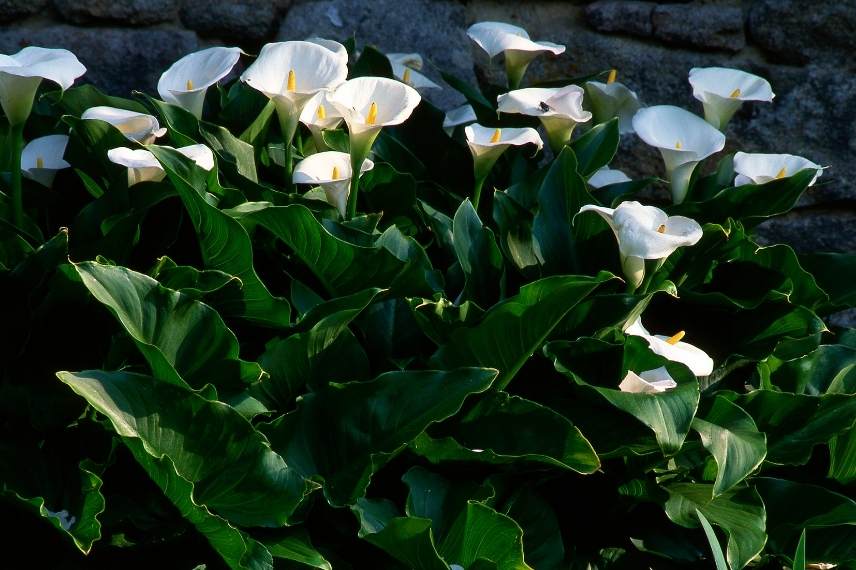
Hollyhock... and a few biennials
Wild plant, often self-seeding in gravel or at the foot of a wall, the hollyhock (Alcea rosea) has a very deep taproot. It is often grown from sowing, but when purchased in a large deep pot, this characteristic is quite noticeable. Transplanting a hollyhock that has settled in a location you don’t like can therefore be quite risky…
While it behaves like a biennial, its very long flowering period and undeniable charm make it a beautiful perennial to grow in our gardens. So, don’t uproot them! As they often appear where they choose, it means the soil and exposure (sunny) suit them very well: they generally produce beautiful flowers for 3 to 4 consecutive years. And even though they remain sensitive to rust, their stately habit and the softness they exude are enough to forgive them!
Several other biennial plants are also sensitive to transplantation, such as Verbascums and Foxgloves, which have a taproot or fusiform root. For all of them, spontaneous sowing is truly the best way to obtain new young plants!
→ Everything you need to know about hollyhocks: sowing, planting, care.

Hellebores
One says everything … and its opposite about Hellebores. What is certain is that Christmas roses (Helleborus niger) do not particularly like being moved, but it all depends on the timing and how it is done. By operating in late summer, after their period of dormancy, and taking a large clump of soil, there is still a chance of successful replanting. Autumn rains will ensure better establishment, and they should not suffer too much, even if it is not exactly their cup of tea.
→ Everything you need to know about Planting and growing Hellebores.

But also
Dittany (Dictamnus albus) with its highly ramified root system, the False Hellebore (Veratrum album) and its deeply anchored roots also dislike being moved. The Eryngiums or sea hollies are also perennials sensitive to transplantation, as they too take a long time to establish their roots deeply.
- Subscribe!
- Contents
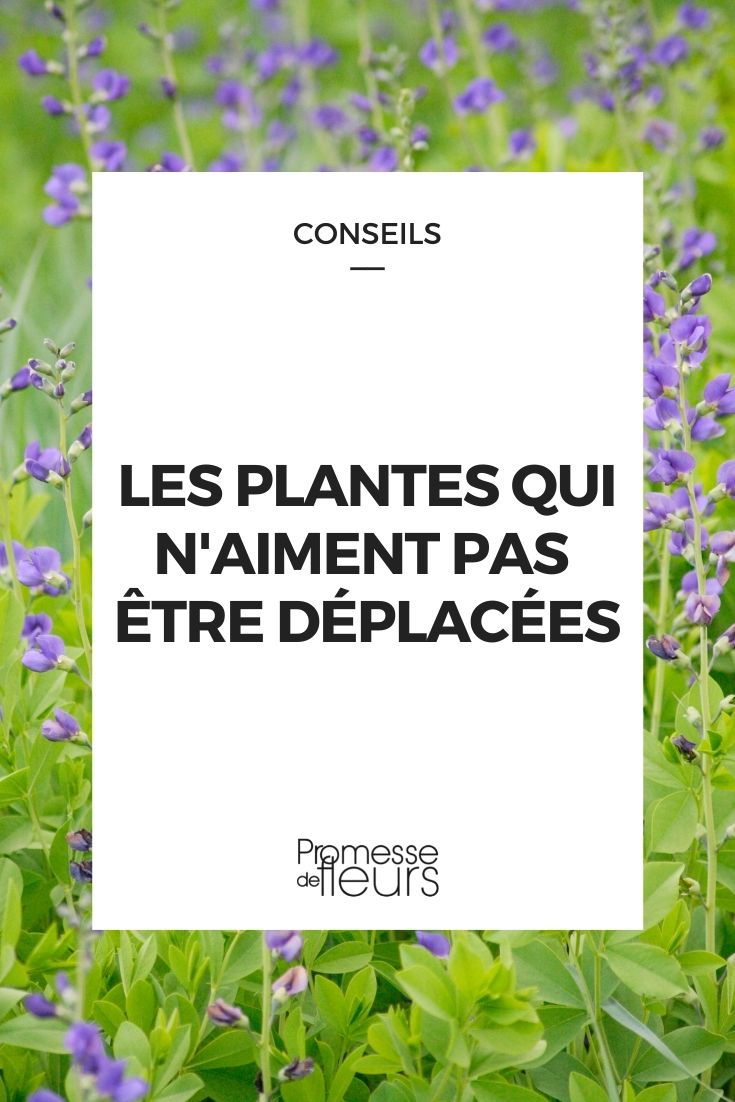































Comments